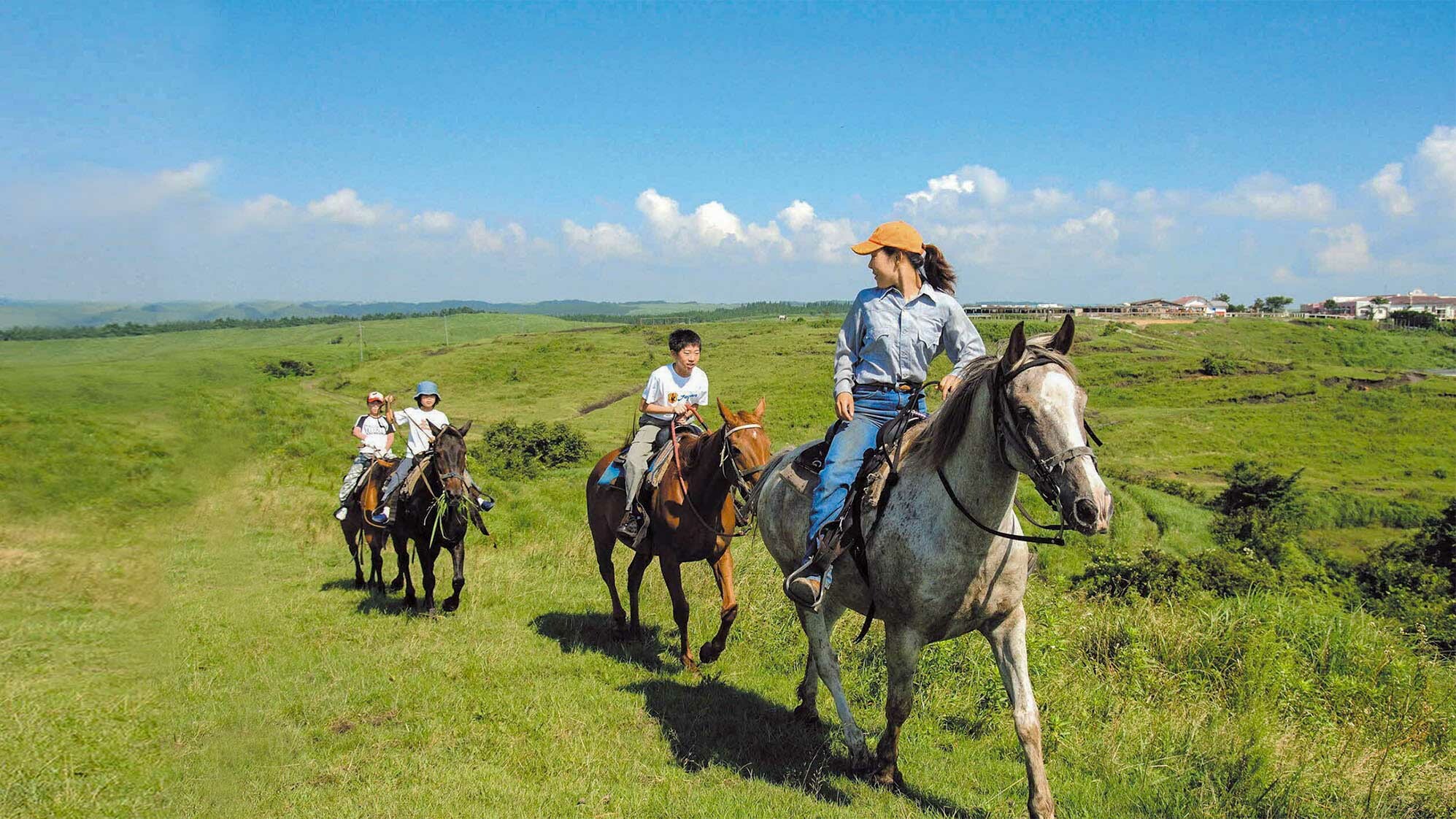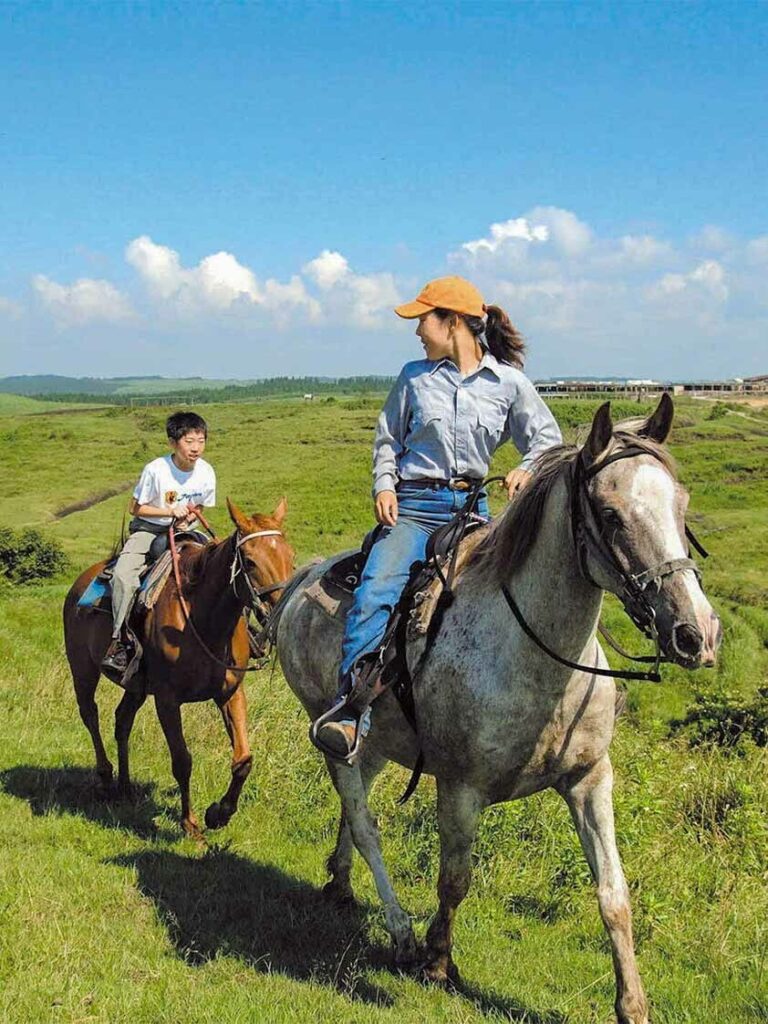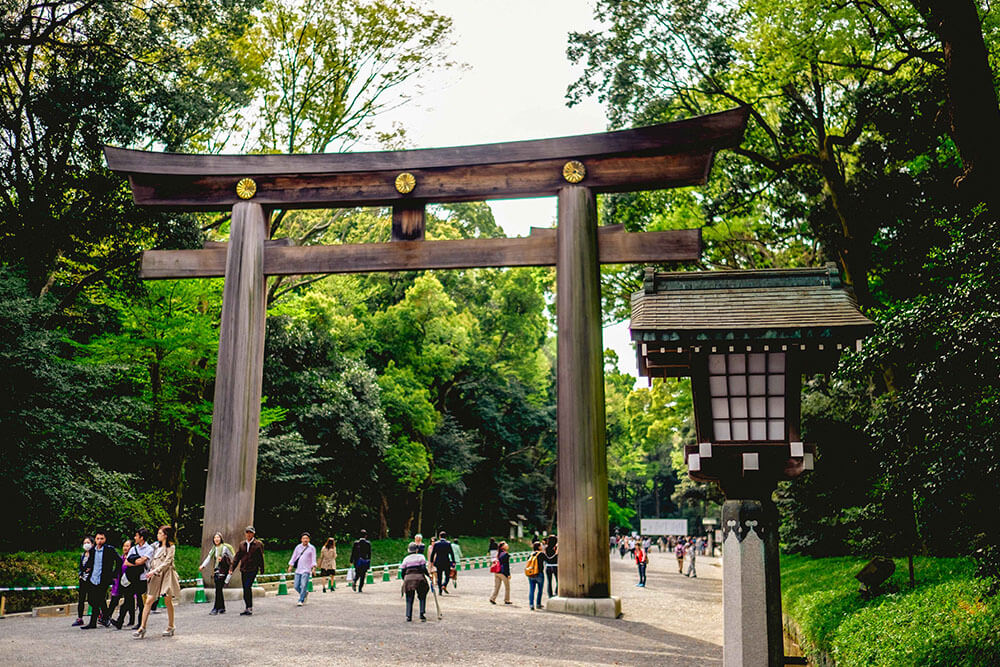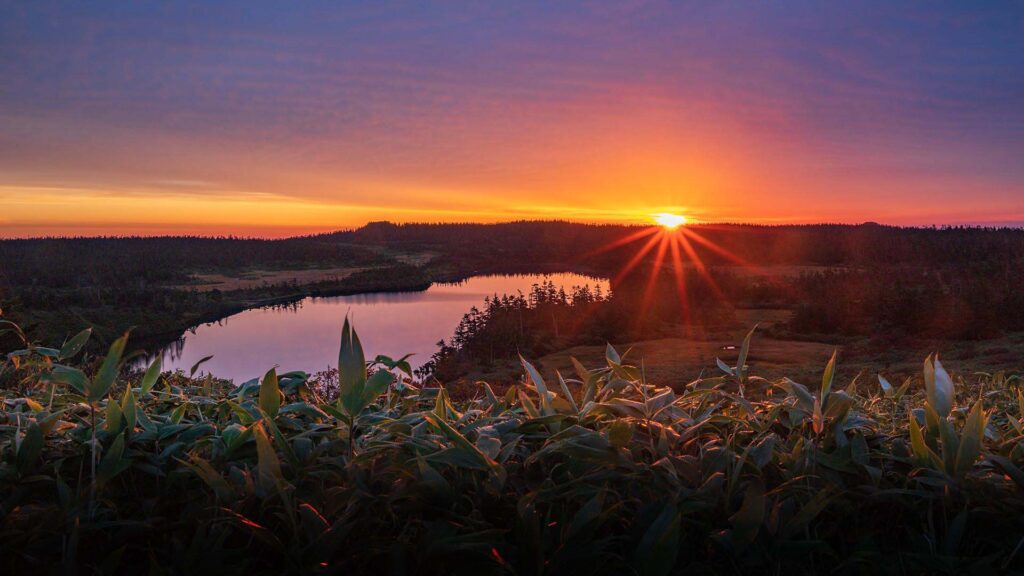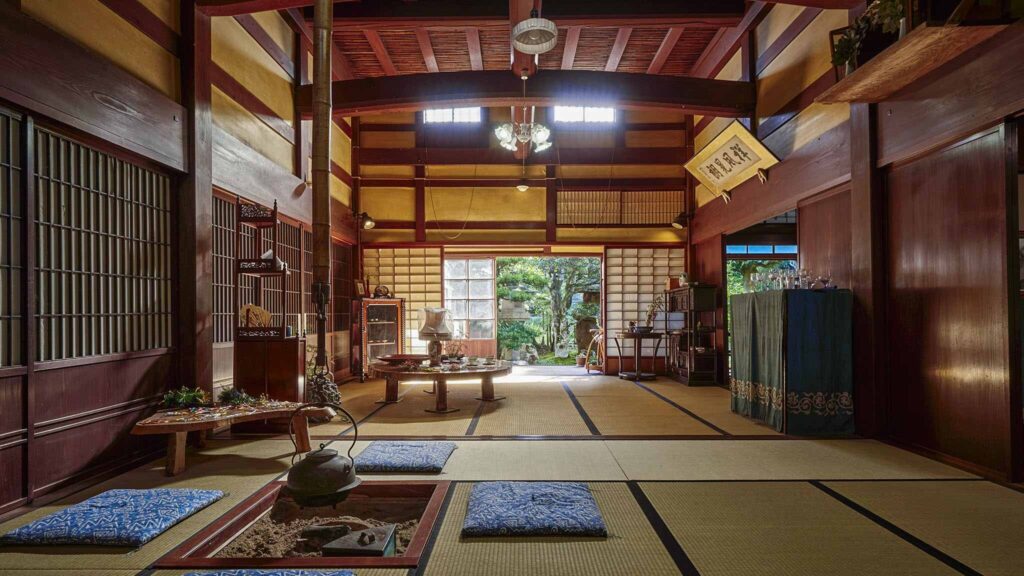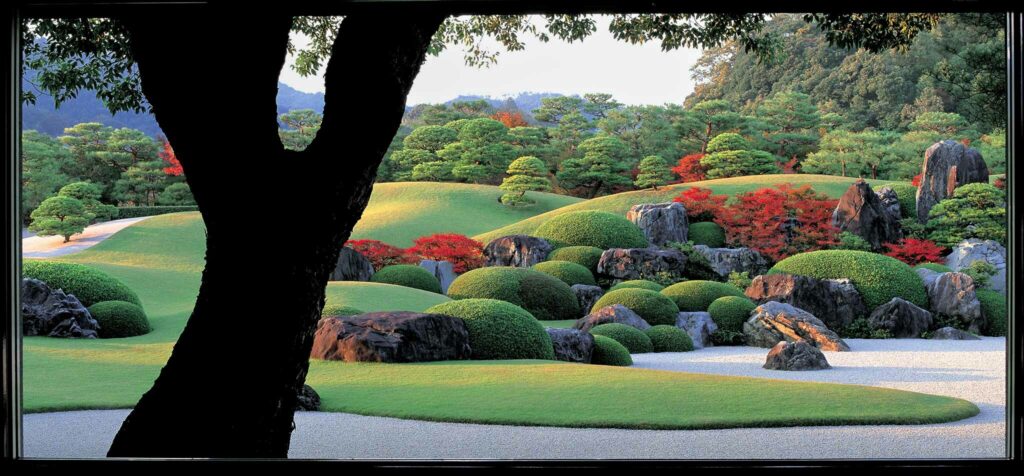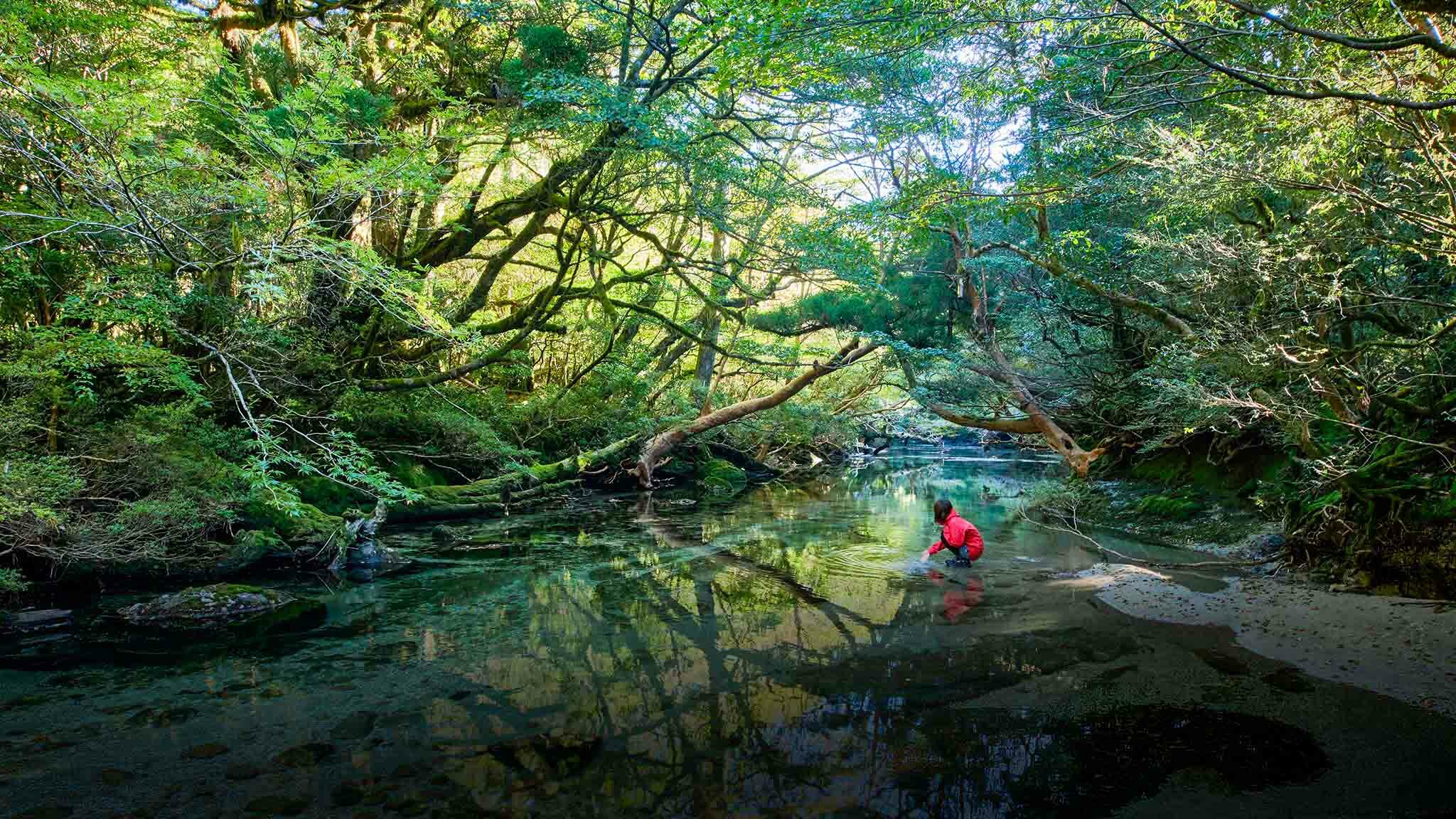
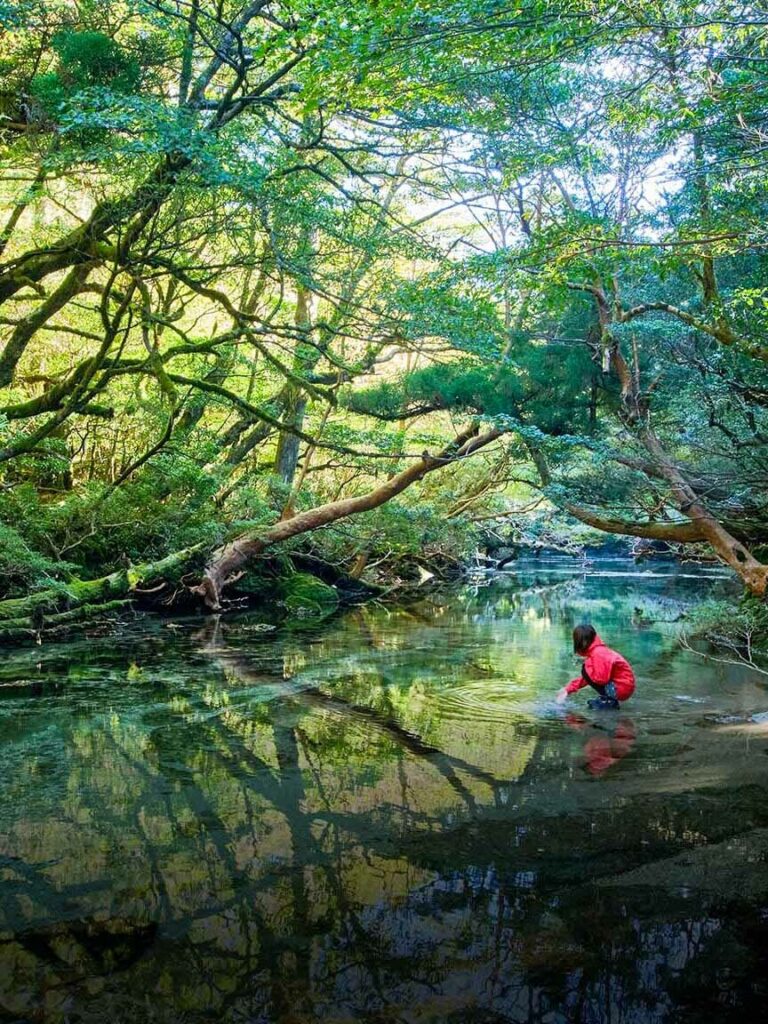
Wellness in the Wild
Tap into nature’s restorative power while discovering Kyushu’s breathtaking forests, mountains,
Kyushu ![]()
The deep forests of Okutama and Yoyogi Park’s variety of activities offer a well-rounded holistic experience in Tokyo. Visitors to Japan wishing to stretch their legs further afield should head down to the southern island of Kyushu, where the region’s diverse geography provides a stunning backdrop for wellness activities such as hiking and soaking in healing

Into the Woods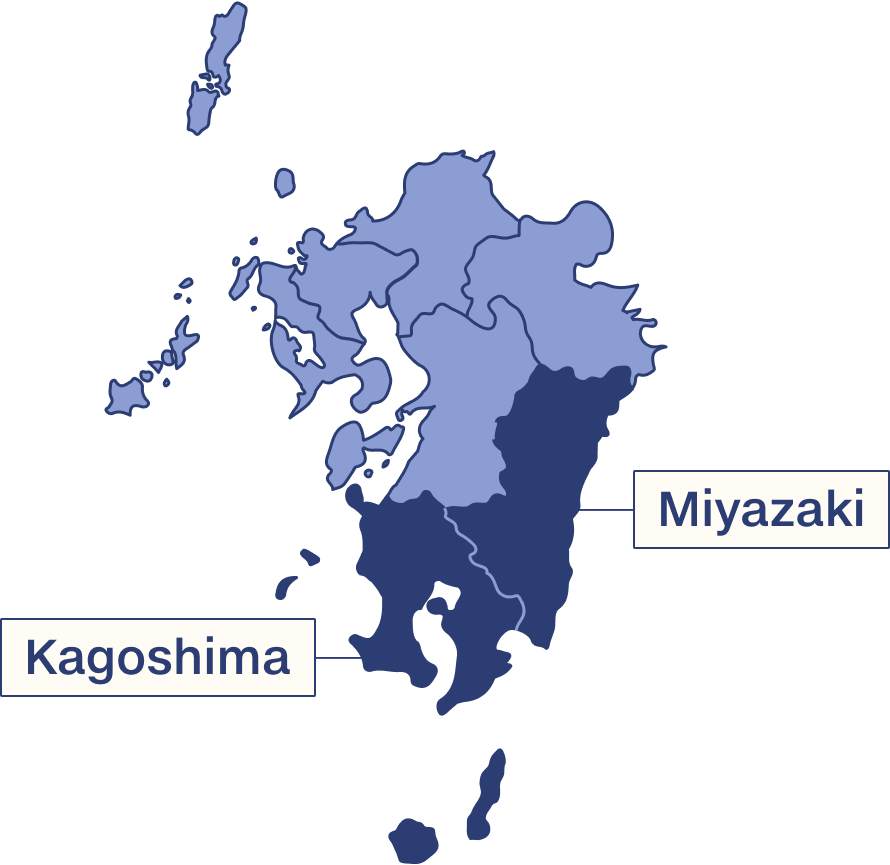
The Japanese custom of shinrin-yoku, or forest bathing, can be as simple or as in-depth as you like. It only takes a few minutes in a natural environment to ease stress and reconnect with nature—an abundant resource in Kyushu.
Yakushima, a UNESCO World Heritage Site in Kagoshima Prefecture, sparks the imagination of travelers with its untouched primeval forests, mighty waterfalls, and spectacular diving spots. Here, the climate varies with the difference in elevation from the coast to the mountain peaks, and directly shapes the variety of Japanese flora and fauna. Standing below the towering ancient cedar trees known as yakusugi—many of them over 1,000 years old—puts one’s own mortality into perspective as these monoliths may live for yet another millennium.
For travelers coming to Miyazaki Prefecture seeking a similar immersion in nature, Nagata Gorge in the town of Mimata is a popular spot. The gorge stretches for approximately 6 miles (10 kms) along the Okimizu River and is lined with a canopy of trees and other flora, including maple trees that turn a brilliant red in autumn. After a hike along this refreshing stream, a visit to the rhododendron forest is a must. In spring, 30,000 rhododendrons of 500 species bloom between the trees, creating a canvas of color beneath the boughs. Visitors to the area should also sample Gold Ikura Don, a dish of golden salmon roe on rice known for its rich, flavorful texture, which can only be found here.
Down to Earth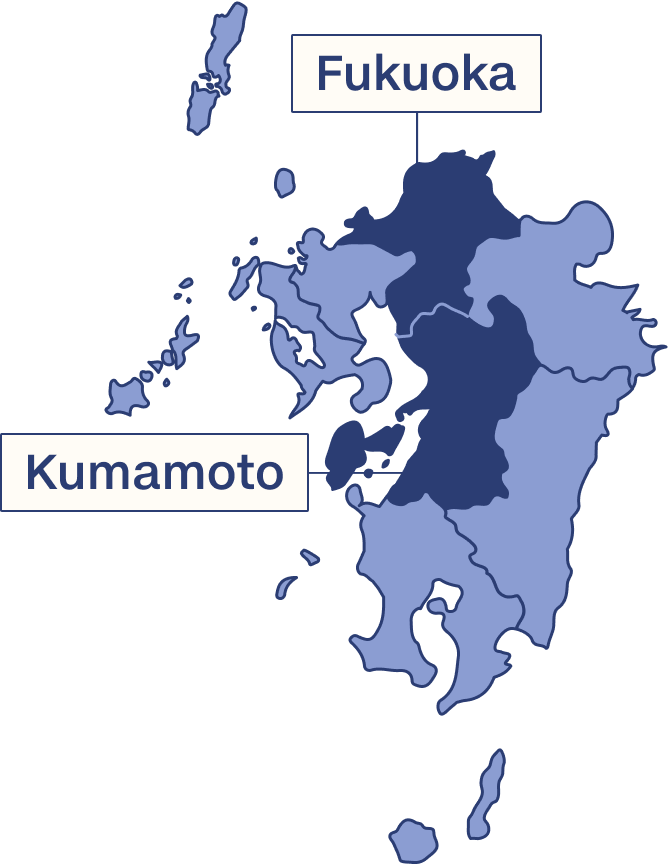
Not all wellness escapes need to be slow-paced—testing one’s physical and mental limits with exhilarating natural encounters can be both a rewarding experience and encourage self-development.
Renowned as one of Japan’s three great karst areas, the Natural Monument-designated Hiraodai Karst Plateau in Fukuoka Prefecture is a vast geological adventure playground fit for any age. It spans almost 4 miles (6.4 km) from north to south and just over one mile (1.6 km) from east to west. Countless gray-white limestone formations dot the undulating hillside, jutting out between the strands of grass like fluffy clouds in a deep green sky. Visitors can hike, investigate underground caverns and limestone caves, and even scale some of the natural bastions, while those seeking quieter activities can enjoy soba noodle making, pottery throwing and more at one of the park’s many facilities.
Home to one of the world’s largest active volcanoes, Kumamoto Prefecture’s Mount Aso offers a wealth of activities to deepen your understanding of the natural world and to showcase its enormous power. Located inside both Aso-Kuju National Park and the Aso UNESCO Global Geopark, it provides rare opportunities for hikers to approach active and steaming craters such as Mount Nakadake up close—depending on the level of volcanic activity. There are other unique ways to fully enjoy the expansive region, such as paragliding, horse riding, and hot-air balloon rides.
Wellsprings of Wellness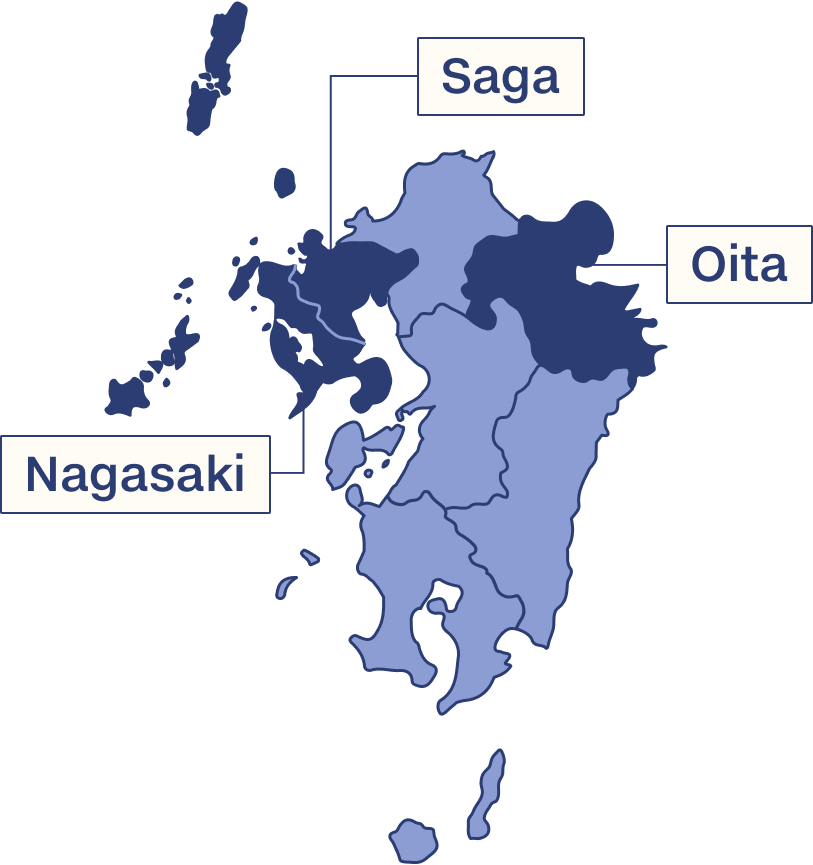
Kyushu’s hot springs are often lauded for their therapeutic effects, said to improve both blood circulation and provide relief for sore muscles—an especially welcome treat after long nature walks and hikes.
The Unzen area in Nagasaki Prefecture has long been famed as a summer resort for visitors seeking healing baths and respite from fast-paced city life. An ideal destination in any season, Unzen’s varied topography showcases the ever-changing beauty of nature with each seasonal shift. From the vibrant Miyama Kirishima azaleas in spring and the brilliant verdant trees in summer to the colorful fall leaf displays and misty, icy landscapes in winter, visitors will find a magical landscape whatever the time of year. The Unzen Hells, a mysterious landscape filled with steaming vents and spitting geysers, adds a level of surreal wonder to this otherwise rich and bountiful region.
More of the region’s geothermal wonders can be found in Saga Prefecture, where the mineral-rich geothermal waters of Takeo Onsen have drawn visitors here for over 1,300 years. Even today, this hot spring resort town’s tranquil atmosphere entices with its cozy traditional inns and surrounding lush forests. Visitors will also appreciate the many fascinating traditional structures around town, including the imposing vermillion and white Romon Tower Gate. There are several hiking trails in the area, and nearby Mifuneyama Rakuen’s expansive garden at the base of Mount Mifune fascinates with its projection-mapping art shows during summer and autumn.
One of Japan’s most famous hot spring towns and often nicknamed “Japan’s Onsen Capital,” Oita Prefecture’s Beppu Onsen boasts an extensive network of hot springs, offering visitors experiences ranging from dips at traditional wooden bathhouses to being buried in naturally hot-spring heated sands on the beach. The city’s numerous steaming ‘Hells’ are not to be missed as their colorful bubbling pools are remarkable feats of natural energy. Visitors can’t get into any of them, but can enjoy eating hard-boiled eggs, pudding, seafood, and vegetables that are ‘Hell’-steamed by these pools’ vapors at select destinations.
From biodiverse islands to bubbling hot springs, Japan’s southern paradise invites travelers to embark on a transformative journey of well-being amid the breathtaking beauty of Kyushu.
![]() How to Get There
How to Get There
Getting from Tokyo to Kyushu’s many destinations is as easy as hopping on a plane. Depending on the prefecture, a domestic flight with ANA or JAL from Haneda International Airport to Kyushu takes about 1.5 hours. Both airlines regularly offer promotions for international tourists, and their focus on omotenashi—the Japanese style of hospitality of anticipating the needs of customers to providing thoughtful service—ensures travelers continue to experience the essence of the destination while exploring the country.
For rail travel in the region, there are several options available.
JR Kyushu‘s many sightseeing trains will leave visitors spoiled for choice. One of these is the A-Train, operated between Kumamoto and Misumi, where travelers can enjoy a sophisticated jazz bar-like space as they take in the view passing by. Use the JR Kyushu Rail Pass to save on train travel within the region.
Nishi-Nippon Railroad Co., Ltd also operates unique rail experiences, including The Rail Kitchen Chikugo, a sightseeing train offering a farm-to-table taste of seasonal Kyushu. For Fukuoka City travel, the Fukuoka Experience Bus Ticket combines a free Fukuoka City bus ticket and an experience program in one of the city’s attractions. Those wishing to go deeper into Fukuoka Prefecture should purchase the Dazaifu-Yanagawa Sightseeing Ticket Pack—a great deal when visiting the major destinations of Dazaifu and Yanagawa.
Learn more about other journeys
